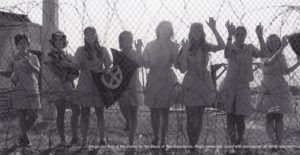Oral History and Emotions
Words and Silences Volume 8, Number 1,
May 2018

Welcome to the 2017-2018 issue of Words and Silences, the second issue published in our new digital-edition format. For this issue, the IOHA editors called for authors to share their experiences by submitting papers related to the theme of “Oral History and Emotions.”
Seeking to further illuminate the role oral history has in engaging emotion and vice versa, four authors responded to the call to share their experiences with “Oral History and Emotions.” They offer examples of oral history projects and historical moments that are each very different in subject matter and geographical region; but we believe that readers will find that all of the papers consider the following:
- Emotions experienced by interviewees; emotions experienced by interviewers
- The importance of field work
- Intersubjectivity
- Emotions matter
In This Issue
In sharing stories from interviews she conducted with Vietnam War-era Red Cross volunteers, also known as “Donut Dollies,” Rose Campbell introduces us to the ways in which historical experience, and memories thereof, are laced with intense emotion, and how interview sessions themselves became emotional spaces for each woman who spoke with her. She also discusses her own involvement in the project and the necessity of creating frames for understanding through the empathic gesture. Shivangi Jaiswal shares her experience as a Research Assistant for several oral history projects in India, driving home the point that oral history is much more than a conversation between an interviewer and interviewee; it is also where the interview takes place, who else is present, and what happens to emotional meanings “in translation.” Reeti Basu introduces us to the unique culture and memory of the Chitrakars, illustrating how shared memories may be influenced by emotion and are meaningful beyond the accuracy of the remembered information. And finally, Laia Fernández Bernalte’s biographical treatment of Teresa Hortensi i Bosch has taught her that “emotions are part of people’s lives and condition their actions,” and that one “cannot do history work omitting feelings…” An exploration of emotions and the subjectivities inherent in the biographer’s/interviewer’s interpretations, Bernalte’s article leaves us with as many follow-up questions as examples regarding the role of emotion in oral history work.
We hope that this body of writing, which complements others’ published experiences with this theme, proves interesting to our members and readers.
Sincerely,
David Beorlegui, Editor (Spanish)
Lauren Kata, Editor (English)
“We Were Basically Counselors”
“We Were Basically Counselors” Read More »
“We Were Basically Counselors”: The Unintended Emotional Duties of “Donut Dollies” in the Vietnam War
Rose Campbell Regis University Center for the Study of War Experience
Behind the Transcript, Beyond the Recorder
Behind the Transcript, Beyond the Recorder Read More »
Behind the Transcript, Beyond the Recorder: Notes from the Diary of a Research Assistant
Shivangi Jaiswal Jawaharlal Nehru University
A Life From The Threshold
A Life From The Threshold Read More »
A Life From The Threshold: Feminism, Emotion and Oral History. Teresa Hortensi i Bosch
Laia Fernández Bernalte University of Barcelona
The Chitrakars in Naya
The Chitrakars in Naya Read More »
The Chitrakars in Naya: Emotion and the Ways of Remembrance
Reeti Basu Centre for Historical Studies, Jawaharlal Nehru University
